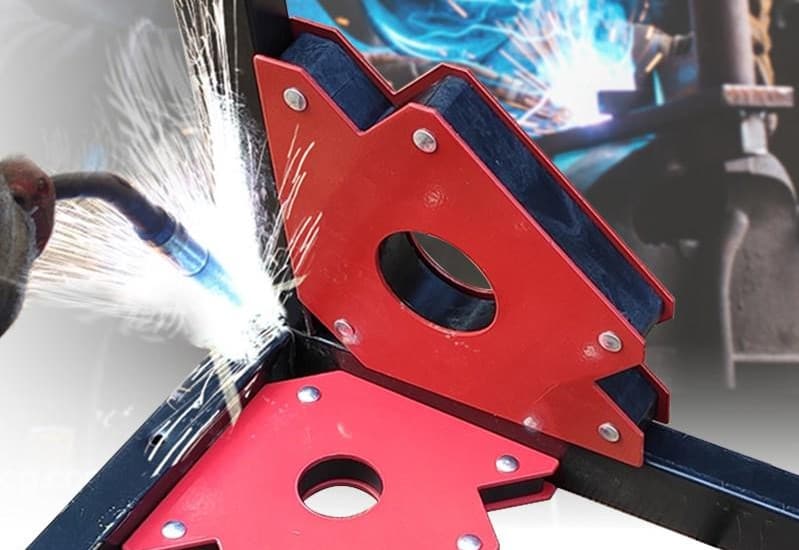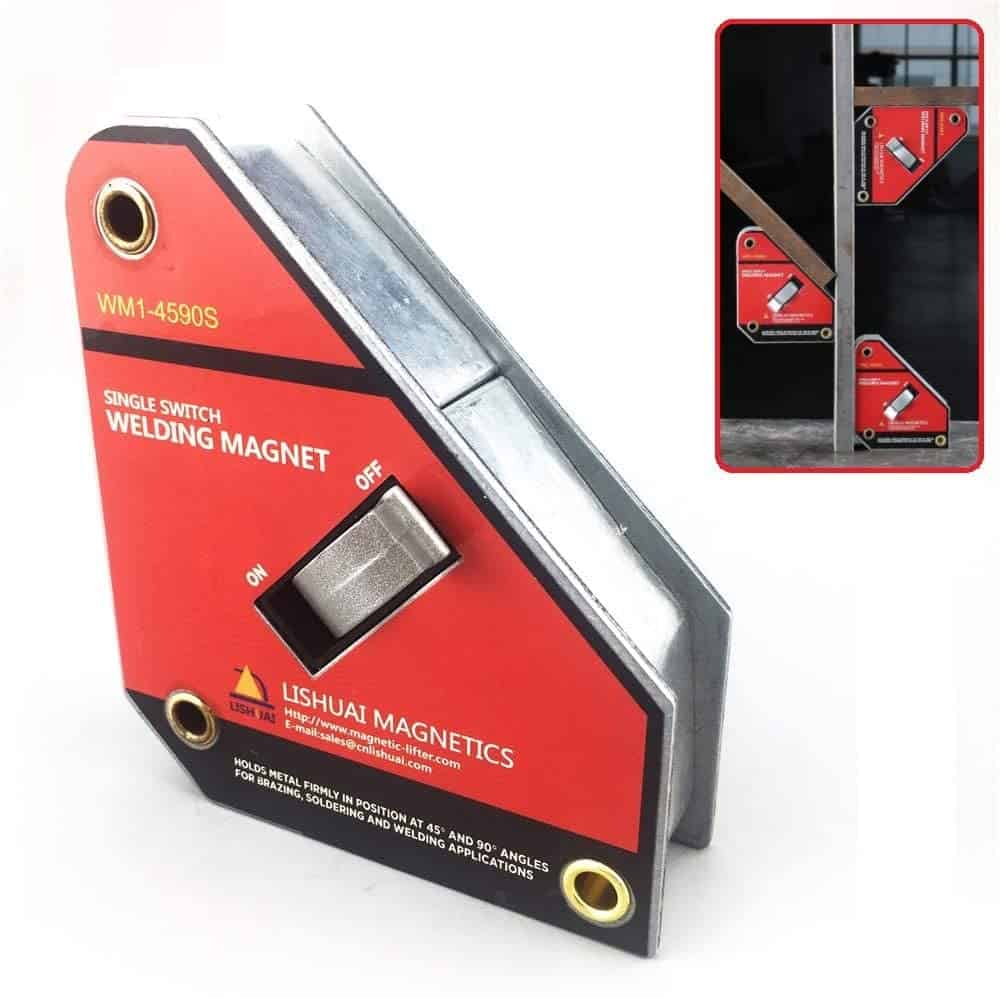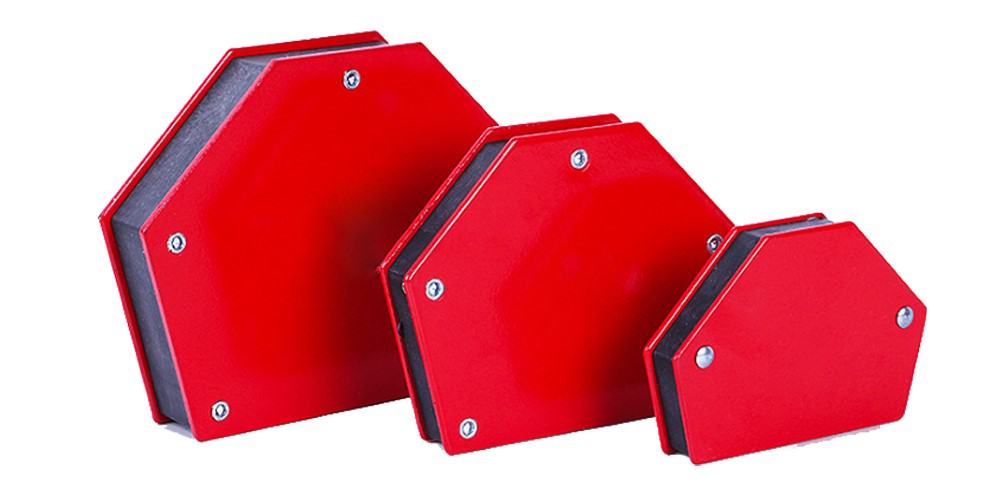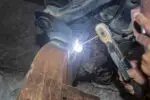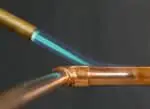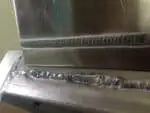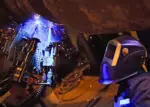Taking up a welding job is not always easy or simple. It requires patience, the right technique, and appropriate tools to get the desired results. Especially, if you are doing the work all by yourself, you could definitely use some assistance to accomplish that exemplary weld.
This is where welding magnets come into the picture. Additionally, welding clamps are of great help too for a good welding job to be done.
Both of these tools help you maintain the alignment of the metal pieces that you need and want to weld together. Magnets and clamps play different but equally important roles in a small or big welding work.
In this article, I have talked about all the different types of magnets available, the proper meaning and features of each magnet, how they help in welding, etc., in depth. Read on further to learn more.
What is a welding magnet?
Welding magnets are a great tool in welding, as it makes the welding work easy by acting as a placeholder. Thus, keeping your hands rather free.
These magnets have a tremendous amount of strong magnetic field that can attract all types of metal surfaces. As a tool in welding, it provides assistance by being a helping hand that holds the metal pieces at various desired angles, ranging from 45 to 135 degrees.
This keeps them steady in the right position while you weld the two pieces together to get the perfect end weld. These magnets are mostly made from alnico, neodymium, or samarium cobalt, which is what makes it exceptionally strong in order to be able to fulfill your welding needs.
How do you correctly use the welding magnets?
By now you already know what a welding magnet is and how it helps in welding work. Now, I will explain how to use them correctly while welding.
1.) Before you begin your welding work, take the two pieces of metal that you want to weld together.
2.) Then take the magnet and place it horizontally on those pieces.
3.) Allow the magnet to hold them together securely in the required angle.
4.) Now, you can start welding hassle free by keeping one of your hands free, since the magnet is going to hold the pieces in place together.
It is a very simple process and beneficial in every way because you get a much straighter, and neater weld results.
One important thing to note when you want to tack weld two or more pieces of metal together, you should normally lay the magnet on the piece that is horizontal.
While the other piece should be lined up at the desired angle. This makes it easier to place the metals together.
The only drawback with using welding magnets is their high level of magnetism which can easily attract other metal pieces.
This is something you do not want as your alignment can be easily ruined and separating the magnet from the metal piece can be quite a headache.
What are the different types of welding magnets?
Welding work does not consist of only one type of process. There are different machines available for various types of weld work.
Similarly, there are several types of welding magnets that provide aid in different kinds of welding projects.
Therefore, I have listed out the types of welding magnets that exist for you to understand better the kind of magnet you can use that will help you in your welding project.
1.) Welding Magnets with Switches
These types of welding magnets that come with switches are quite beneficial for the person welding because you can turn them on and off as and when you please.
The magnet has a switch that can be controlled by you in order to handle its magnetism when not in use. They are extremely strong magnets that can easily stick to your workbench and other tools in your toolbox.
So, it really helps when you do not have to worry about this issue because speaking from experience, it can be quite a pain having to pull them away once stuck.
These magnets can hold workpieces at angles ranging from 45 to 90 degrees. Till the time you are not ready to start work, remember to keep the magnet switch off.
2.) Multi-Angle Welding Magnets
The multi-angle welding magnet is quite a versatile one as it works perfectly when you want to assemble things, for marking off, for installing pipes, welding, and also for soldering.
The name itself suggests its main feature of being able to hold workpieces at several different angles, like at 45 degrees, 90 degrees, and also 135 degrees. Any kind of rigid metal surface can be attracted by this magnet with its magnetic strength.
3.) Arrow Welding Magnets
The arrow welding magnets are similar to the multi-angle welding magnets when it comes to holding the workpieces at different angles, like 45 degrees, 90 degrees, and 135 degrees.
They are equally strong enough to pull metal surfaces that are rigid. You can use this magnet mainly for welding and assembling in the form of a double-sided holder due to its arrow shape.
4.) Adjustable Welding Magnets
If you need a welding magnet that can hold your metal pieces at any angle then the adjustable welding magnet is the right choice.
It can pivot around to a complete 360 degrees, thus allowing the metal to be held at whichever angle required. For welding and assembling work it is the ideal option as it can bear the weight of materials up to 50 pounds.
When you work on any application that requires a lot of high heat, like brazing, and welding, you can use adjustable link welding clamps along with these magnets, as they will assist you in holding the steel plates in place. If your workspace is small or limited then these are great to use.
5.) Sheet Metal Magnets
These types of magnets have a much greater gripping power and strength due to being constructed from rare earth metals. It comes with a plastic handle that makes placing, moving, and removing it quicker and easier compared to other magnets.
When working on pieces like metal sheets and automotive metal panels, whether you are cutting, welding, or painting them, you can take the help of these magnets to keep them secured in their place by placing them on top of the pieces.
The magnet comes with rubber pads that are replaceable, which gives friction so you can handle much larger and heavier pieces. Remember to remove these magnets before completing the welding work.
6.) Snake magnets
Snake magnets are also a type of sheet metal magnet that should be removed before finishing the welding work.
This magnet comes in the form of two flat magnetic pads and has a metallic cable that can be bent and twisted in every direction according to your requirement.
The same cable also holds the pieces you are working with, in various angles. There is also a spring clamp included in this set, which can be used in place of one of the magnet heads to hold tools that are relatively smaller.
7.) Magnetic Welding Clamps
Even if the name has the term magnetic in it, these are clamps and not magnets. However, it has heavy-duty magnetic features due to which it serves the purpose of both clamps and magnets.
They are mainly utilized for larger pieces of metal that need to be welded, fabricated, and assembled. It has two magnetic arms attached to a spindle, which allows it to be placed firmly in 45 to 90 degrees angles. It also helps prevent welding spatter to a great extent.
Are welding magnets and welding clamps the same thing?
We have had people asking this question several times because of their similar features. However, welding magnets and welding clamps are not the same things.
The former is simply a magnet that welders use when they need to weld, cut, or paint metal, by holding different parts together with their magnetic strength.
On the contrary, the latter is a device used by welders that presses two or more pieces together from their opposite sides in order to hold them together.
Wrapping up
The next time you decide to weld anything, remember to look for the ideal welding magnet to make your job easier and safer.
All said and done, welding magnets do have the disadvantage of causing arc blow, which is basically an undesired deviation during the welding process.
This can be avoided by keeping the magnets at a good distance because the magnetic strength tends to reduce with distance. Happy welding!

